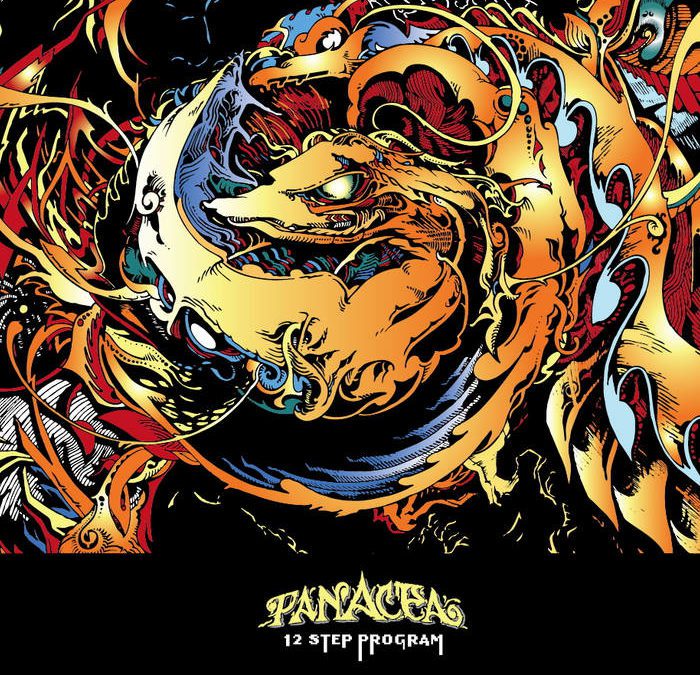The 12 Step Program – Painting by Panacea
The 12 step program is a set of guiding principles for recovery from addiction, compulsions, or other behavioral problems.
Originally developed by Alcoholics Anonymous (AA) as a method of recovery from alcoholism, the 12 step program has since been adapted for use in various other addiction and recovery programs.
Step 1: Admit Powerlessness
We admitted we were powerless over our addiction and that our lives had become unmanageable.
The first step involves admitting that you are powerless over your addiction and that your life has become unmanageable as a result.
This can be a difficult step, as it requires acknowledging that you are unable to control your addiction on your own.
However, it is an important step because it allows you to let go of the belief that you can control your addiction and begin to look for help and support.
Step 2: Seek Higher Power
We came to believe that a power greater than ourselves could restore us to sanity.
The second step involves seeking a higher power or a greater force that can help you overcome your addiction.
This higher power can be a traditional deity, the support of a group or community, or simply a belief in something greater than oneself.
The important thing is to find something that gives you hope and helps you believe that recovery is possible.
Step 3: Surrender to the Higher Power
We made a decision to turn our will and our lives over to the care of God as we understood Him.
The third step involves surrendering your will and your life to the care of your higher power.
This means letting go of the belief that you can control your addiction and trusting that your higher power will guide you towards recovery.
It also involves making a commitment to follow the path of recovery, no matter how difficult it may be.
Step 4: Take Moral Inventory
We made a searching and fearless moral inventory of ourselves.
The fourth step involves taking a thorough and honest look at yourself and your actions.
This includes identifying your character defects, the ways in which you have caused harm to others, and the behaviors that have contributed to your addiction.
The purpose of this step is to gain insight into your own flaws and to begin the process of making amends for the harm you have caused.
Step 5: Admit Wrongs
We admitted to God, to ourselves, and to another human being the exact nature of our wrongs.
The fifth step involves admitting to God, to yourself, and to another person the exact nature of your wrongs.
This involves confessing the specific actions and behaviors that have contributed to your addiction and caused harm to others.
This step can be difficult because it requires honesty and vulnerability, but it is an important part of the recovery process because it allows you to take responsibility for your actions and begin to repair the damage you have caused.
Step 6: Seek Character Defects
We were entirely ready to have God remove all these defects of character.
The sixth step involves being entirely ready to have your higher power remove all of your character defects.
This step requires a willingness to let go of negative behaviors and attitudes that have contributed to your addiction, and to trust that your higher power will help you to become a better person.
Step 7: Humbly Request Removal
We humbly asked Him to remove our shortcomings.
The seventh step involves humbly asking your higher power to remove your shortcomings.
This step involves admitting your own limitations and asking for help in overcoming them.
It also involves trusting that your higher power will guide you towards recovery and help you to become a better person.
Step 8: Make Amends List
We made a list of all persons we had harmed, and became willing to make amends to them all.
The eighth step involves making a list of all the people you have harmed as a result of your addiction and becoming willing to make amends to them.
This step involves acknowledging the harm you have caused and taking responsibility for it.
It is an important step because it allows you to begin the process of repairing relationships and making things right with the people you have hurt.
Step 9: Make Amends
We made direct amends to such people wherever possible, except when to do so would injure them or others.
The ninth step involves making direct amends to the people you have harmed, wherever possible, except when doing so would cause further harm.
This step involves apologizing and taking concrete steps to make things right with the people you have hurt.
It is an important part of the recovery process because it allows you to repair relationships and make amends for the harm you have caused.
Step 10: Take Ongoing Inventory
We continued to take personal inventory and when we were wrong promptly admitted it.
The tenth step involves continuing to take personal inventory and promptly admitting when you are wrong.
This step involves regularly examining your own actions and behaviors, and taking responsibility for your mistakes.
It is an ongoing process that will likely take a lifetime, since as human beings, we’re always growing and evolving.
Step 11: Improve Spiritual Connection
We sought through prayer and meditation to improve our conscious contact with God as we understood Him, praying only for knowledge of His will for us and the power to carry that out.
The eleventh step involves seeking to improve your conscious contact with your higher power through prayer and meditation.
This step involves regularly setting aside time to connect with your higher power and to seek guidance and direction.
It also involves praying for the knowledge of your higher power’s will for you and the strength to follow it.
Step 12: Share Message & Practice Principles
Having had a spiritual awakening as the result of these steps, we tried to carry this message to others, and to practice these principles in all our affairs.
The twelfth step involves having a spiritual awakening as a result of working the previous steps, and then carrying the message of recovery to others.
This step involves sharing your experience, strength, and hope with others who are struggling with addiction, and helping to guide them through the recovery process.
It also involves practicing the principles of the 12-step program in all aspects of your life, and using the tools and skills you have learned to maintain your sobriety and continue on the path of recovery.
The 12-step program is intended to be a lifelong process of self-improvement and self-help, and it is often used in conjunction with therapy and other forms of treatment for addiction and recovery.
It is a spiritual program, and while it is rooted in the traditions of Christianity, it is open to people of all beliefs and backgrounds. By following the 12 steps, individuals can work towards recovery and a better life in sobriety.


